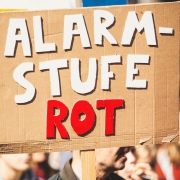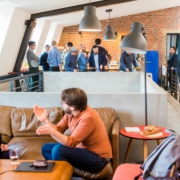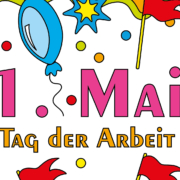Alternative Employee Representation: Beyond Traditional Works Councils
The landscape of employee representation in Germany is undergoing a fundamental transformation. As traditional forms of worker participation face declining relevance, innovative companies are exploring alternative employee representation models that better serve today’s diverse, digitally-native workforce.
The Decline of Traditional Union Membership
Recent data from the Institute of the German Economy (IW) in Cologne reveals a striking trend: only 17 percent of all employees are currently organized in trade unions. This figure represents a significant decline from previous decades and highlights structural deficits that continue to persist. The gender gap is particularly pronounced, with only 14 percent of women holding union membership compared to 19 percent of men.
This declining participation extends to works councils, particularly in medium-sized companies where their significance has diminished considerably. The disconnect between traditional representation models and modern workforce expectations has created a vacuum that forward-thinking organizations are now addressing through innovative approaches.
An alternative to the works council is, for example, a staff committee, an employee council, a cultural council or alternative employee representative bodies (Mitabeiterrat, Belegschaftsausschuß), which perform similar functions to works councils, but without the rigid formal legal requirements.
Alternatives to the works council are company-specific teams of employees who represent the interests of the workforce vis-à-vis management.
The Generational Divide: Why Traditional Models Fall Short
Through extensive conversations with HR professionals and employees across various industries, a consistent pattern emerges in feedback about traditional works councils: they are perceived as outdated, overly bureaucratic, and focused on self-serving interests rather than genuine employee advocacy.
This perception becomes particularly problematic when addressing contemporary workplace challenges. New Work concepts, digital transformation initiatives, and rapid implementation strategies often encounter resistance from traditional works councils that seem more concerned with procedural minutiae than practical solutions. Examples include lengthy debates over whether HR departments can implement Excel spreadsheets without works council approval, or whether employer Twitter accounts constitute co-determination-subject technical surveillance equipment—a question that reached the Hamburg Regional Labor Court in a notable decision.
Generational Skepticism: Gen Z and Millennials Seek Different Solutions
Employees who grew up with Facebook, Instagram, and other social platforms—those who successfully navigated the Corona pandemic while delivering exceptional performance from home offices—have little patience for such tactical maneuvering and bureaucratic obstacles. Generation Z and Millennials encounter internal works council structures that fail to reflect their values, working styles, or priorities.
Alternative approaches like Employee Councils offer promising solutions for organizations seeking meaningful employee participation without the constraints of traditional bureaucratic structures.
The Demographics Problem: Male and Over-50 Dominance
Current works council demographics in Germany reveal a significant representation gap. Half of all works council members are between 46-59 years old, while leadership positions are concentrated in an even narrower age range: more than a quarter of chairpersons are between 51-55 years old, and approximately half fall within the 51-61 age bracket. Women, employees with migration backgrounds, contract workers, and part-time staff remain severely underrepresented in these bodies.
Employee Demand for Alternatives: The Employee Council Trend
This demographic and philosophical disconnect has generated significant demand for alternative representation models. Employee teams increasingly reach out seeking guidance on implementing non-traditional participation structures.
A recent inquiry from one of our clients illustrates this trend perfectly:
„We are a company with an international and diverse team that already lives a corporate culture based on exchange and equality. Many of us are eager and interested in contributing even more while representing the interests of all employees. We find no support or participation for electing a works council or standing as candidates. We have read about alternative co-determination, such as the Employee Council, and want to pursue this path. We believe this individualized approach fits us much better…“
The Employee Council: An Agile Alternative to Traditional Works Councils
The alternative Employee Council represents a company-specific co-determination body comprised of voluntary representatives. It functions as a neutral communication channel between employees and management, operating with agility and freedom from bureaucratic barriers. Rather than fostering adversarial relationships, the Employee Council promotes collaborative partnership.
According to the experience of Ursula Vranken, expert for alternative representation, both management leaders and staff appreciate the unbureaucratic and customized organization of these alternative representation boards. This approach leads to mutual understanding of company goals and needs, successfully bringing them together with employee expectations and requirements.
One Size Does Not Fit All
During this implementation process, many mistakes and misunderstandings can arise. Ursula Vranken, as an experienced change and organizational expert, has already guided many companies along this path, helping them navigate potential pitfalls and establish effective alternative representation structures.
This model ensures representative coverage of various company departments and organizational levels. The Employee Council emerges through a facilitated process involving workshops and coaching sessions, where experts work with all stakeholders to clarify the body’s responsibilities and determine which concerns and personnel it will serve.
Alternative Form of Employee Representation –
Implementation and Practical Considerations
Successful implementation of alternative employee representation requires careful consideration of legal frameworks, company culture, and specific organizational needs. Unlike statutory works councils, Employee Councils operate within voluntary agreements between management and employees, offering greater flexibility in structure and function.
The Future of Employee Representation
As workplaces continue evolving toward greater flexibility, diversity, and digital integration, employee representation models must adapt accordingly. Alternative approaches like Employee Councils offer promising solutions for organizations seeking meaningful employee participation without the constraints of traditional bureaucratic structures.
The key to successful implementation lies in understanding that one size does not fit all. Each organization must carefully assess its unique culture, goals, and needs to develop representation models that genuinely serve all employees while supporting business objectives.
Companies that successfully implement alternative employee representation often discover improved communication, faster decision-making, and higher employee satisfaction and commitment—outcomes that benefit both workers and the organization as a whole. As more companies explore these alternatives, we can expect continued innovation in employee representation models that better reflect the realities of modern workplaces.
The transformation of employee representation is not merely a trend but a necessary evolution responding to fundamental changes in how we work, communicate, and collaborate. Organizations that embrace this evolution position themselves to attract and retain top talent while fostering truly inclusive workplace cultures.
About the Author
Ursula Vranken, founder of IPA partner for people management in Cologne, is a recognized expert in alternative employee representation and organizational change management. With extensive experience in guiding companies through the implementation of innovative participation models, she has helped numerous organizations establish effective alternative Employee Councils and other alternative representation structures.

 joel-danielson-dw4StX7U5Yw-unsplash2-scaled.jpg
joel-danielson-dw4StX7U5Yw-unsplash2-scaled.jpg
 bantersnaps-PTRzqc_h1r4-unsplash
bantersnaps-PTRzqc_h1r4-unsplash iStock_000043610308Medium
iStock_000043610308Medium unsplash
unsplash
 tag_der_arbeit_in_deutschland_-_bild_20140112_1636269723
tag_der_arbeit_in_deutschland_-_bild_20140112_1636269723 istock
istock  patrick-perkins-Zyi0LMybftY-unsplash
patrick-perkins-Zyi0LMybftY-unsplash bantersnaps-PTRzqc_h1r4-unsplash
bantersnaps-PTRzqc_h1r4-unsplash allison-saeng-HF_3yb5F2kA-unsplash.jpg
allison-saeng-HF_3yb5F2kA-unsplash.jpg